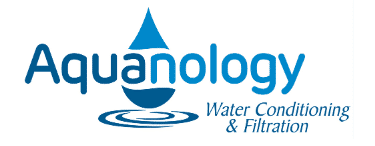Water Conditioning Systems & Services
We offer a wide range of water conditioning systems and services for homes, businesses, and farms in Upstate New York. We believe our communities deserve safe, clean water.
Water testing takes some of the guesswork from what might be in your water, provides a water safety factor for you to refer to, and indicates whether or not a treatment system is needed.
A water softener can remove the hardness from your water, and effectively eliminate or reduce the negative impacts you’re experiencing from hard water.
Are you concerned about the quality of your drinking water? Look no further then Aquanology for advanced filtration and membrane technology can provide you with safe and clean water for drinking, with a taste that pleases.
At Aquanology, we understand that water purification needs vary greatly from one household to another. We offer a range of purification systems, from reverse osmosis and UV systems to custom solutions, ensuring that your water is safe and clean.
Hear from Our Customers
GET STARTED WITH A WATER CONDITIONING SYSTEM
Frequently Asked Questions About Water Conditioning Systems
A softener’s efficiency is always directly related to the water it is treating. However, upgrades and innovations in water conditioning systems and technology have increased efficiency in recent years.
An average 3-person home would use about 300 gallons of water per day. If this would be on public water supplies with a supposed water hardness of 10 grains of hardness, a new high-efficiency water softener would use approximately 21 pounds of salt per month. In a year, this would be about 250 pounds or five 50-lb. bags.
Well water tends to have higher hardness levels which translates into higher salt usage. With well water that is 30 grains of hardness, the same amount of water used would bring monthly salt usage to about 60 pounds of salt per month.
Keep in mind, that when removing iron from water with a softener, higher salt dosages are required. This means a sacrifice from salt usage efficiency.
Remember that not all softeners are created equal. There are varying degrees of efficiency in water and salt usage among softeners available on today’s market. If you have any questions, or would like your water tested, contact Aquanology, LLC today.
When compared to other disinfection systems, the answer is no. As long as proper pre-treatment is maintained, an annual system check-up and lamp replacement is all that is required. As most UV systems are designed to be left on at all times, a typical household system will draw about the same energy requirements as a 40 watt light bulb!
Sounds conflicting, but there is truth to this statement. Exposure to excessive amounts of sunlight can be harmful to your health. UV energy is actually broken up into three distinct wavelengths; UV-A, UV-B, and UV-C. Sunlight is comprised of all three UV rays; however, the most powerful UV-C rays are blocked out by the earth’s ozone layer, thereby protecting us on earth. Direct exposure to the sun should be carefully monitored in order to minimize the exposure risk.
It is the UV-C portion that is used for the disinfection of drinking water, and to a microorganism such as E-coli, UV-C rays are deadly. It is true that you don’t want to expose your eyes or skin directly to the UV light in a treatment system; however, the system is designed to prevent this from happening. In a properly designed UV system, there is absolutely no risk to the homeowner.
The UV process is a physical process, as opposed to the addition of chlorine to the water to address microbiological issues which is a chemical process. This is important as UV addresses the microbiological issue without adding anything to the water or creating what is known as disinfection by-products (like trihalomethane, which is proven to be carcinogenic). In simple terms, when a microbe is directly exposed to the UV light, the DNA (its fundamental building block) of the cell is damaged, thus preventing replication. If a cell cannot reproduce, then the cell cannot cause infection.
UV does have an effect on all microorganisms to some effect. Whether it is bacteria, virus, algae, protozoan cysts, spores, mold, etc., exposure to UV light will harm the organism. Each individual organism requires a different level of exposure (know as UV Dose) in order to prevent cell replication. Some organisms, usually viruses, require extremely high doses of UV light in order to achieve disinfection. The important issue here is that one should ensure that the UV system they are purchasing delivers enough UV dose at the end of the lamp life to ensure adequate disinfection against a typical array of organisms found in drinking water.
UV lamps do age and do so in the same manner as a standard fluorescent lamp. LUMINOR’s low pressure (LP) and low pressure, high-output (LP-HO) lamps have a rated service life of 9,000 hours or approximately one year of continuous use. LUMINOR’s amalgam lamps used in our commercial/industrial and municipal lines have a rated service life of 12,000 hours. At LUMINOR, we guarantee all our lamps to have a minimum life of 1 year.
It should be noted that illumination does not necessarily mean disinfection. The bluish glow given off by a low pressure mercury vapor lamp is actually the glow of the mercury vapor. The actual UV energy providing the disinfection is invisible to the naked eye. A lamp that is still emitting the bluish light does not mean it is providing enough, or any, UV energy. This is why the lamps should be changed at the time as recommended by the manufacturer. On some LUMINOR brand models, there is an integral lamp change reminder built into the system to warn the user when it is time to change the UV lamp.
One must remember that an RO (reverse osmosis) system is comprised of many stages of filtration and not simply an RO membrane by itself. As a result, the RO system provides a staged approach to filtration. Sediment filters first remove the large particulate matter that could potentially clog the membrane. Next, the water enters a carbon filter to remove the chlorine taste and odor. Then the water enters the RO membrane to reduce the level of total dissolved solids. Finally, the water passes through one last carbon filter prior to being dispensed from the faucet to eliminate any trace odors and remove any volatile organic contaminants (VOC’s). Reverse osmosis technology is considered a top of the line product for home drinking water.
Reverse osmosis (RO) has been called unnatural water because of its purity. Detractors claim it is man-made and unhealthy and should only be used for industrial applications and not for human consumption. They say that RO water is too pure and clean to be healthy for you since such perfectly clean, mineral-free water does not exist naturally on earth.
However this type of water does exist, it’s called RAIN. Rainwater is water that has been stripped of all minerals and is often one of the purest and cleanest forms of water on earth. People have been drinking rainwater for thousands of years without any negative health effects. Only recently has rainwater been polluted by the industrial age and man’s pollution of the skies. In the absence of man-made (or heavy natural) air pollution, rainwater can be very pure and safe to drink. While rain water may absorb and pick-up some substances as it falls through the atmosphere, minerals are not one of them. Thus people have been drinking mineral-free water for generations, which is very normal when you consider that nothing is more natural than earth’s life-giving rain.
With the scientific research that has been done over the past 40 years on RO water, none has ever documented any negative health effects from people drinking RO water.
Some minerals are good for you; however, the process of reverse osmosis is not selective as to which ions are removed. The RO system will remove iron and magnesium from your water as easily as it will remove the lead. Your body does want the iron and magnesium, but it doesn’t want the lead. Your body should already be getting all of the nutrients such as essential salts, vitamins, and other trace minerals from the food you eat and the other beverages you drink, such as milk. The water that you consume should be for hydration purposes only and need not be a source of your vitamins or minerals.
Some people prefer the taste and texture of water with a small amount of dissolved minerals. At Aquanology, we have options available which can replace some of the minerals, such as calcium, after an RO system has taken everything out. Again, this is designed primarily for taste reasons for those who have preferences regarding the taste of pure RO water, and not for reasons of “replenishing healthy minerals.”
No, water systems are definitely not all created equal. Like all water filters, the effectiveness of a reverse osmosis system depends greatly on the quality of its components – especially its pre-filter cartridges (quantity and quality) and the membrane itself. Lower quality pre-filters will suffer from premature membrane fouling, as well as reduced performance, purified water output, and membrane life.
One common difference in residential RO drinking water systems is the way it dispenses the water. Most common systems use air pressure from a small holding tank to dispense your drinking water. For higher dispensing pressure, which is sometimes needed for refrigerators and icemakers, some systems utilize specially designed valves to dispense your drinking water at the pressure of your existing water pump.
All the options available on the market can seem overwhelming- which one is right for me? Aquanology has several different options available, and we’re happy to help you decide which is the best for your budget, expectations, and application. Contact us today for more information.
Recent Blog Posts

When Should I Replace My Water Softener?
A water softener is an essential system for homes with hard water, preventing mineral deposits in pipes, appliances, and water fixtures. But like any appliance, it won’t last forever. If your softening system isn’t performing as well as it used to, it might be time to replace your water softener.

How Long Do Water Softeners Last?
Water softeners play an essential role in improving water quality by removing hard minerals like calcium and magnesium. With softer water, appliances work more efficiently and require less maintenance, laundry, and cleaning become easier, and skin and hair feel smoother after bathing. Softened water also helps stop mineral deposits from

Can You Water House Plants with Water Softener Water?
When it comes to caring for plants, one crucial factor to consider is the quality of the water used. As homeowners, many of us rely on water softeners to ensure that our tap water is free from harsh minerals like calcium, magnesium, and iron. However, when it comes to using




